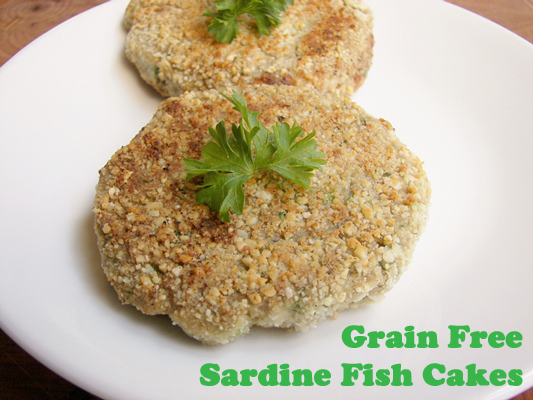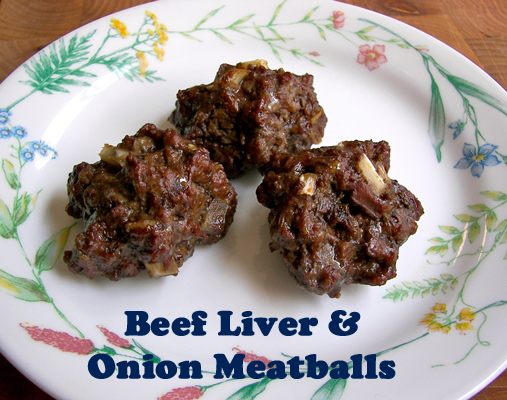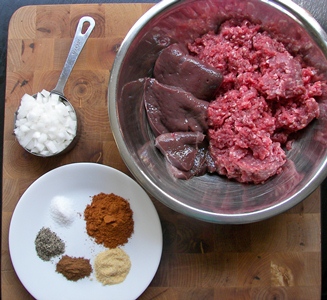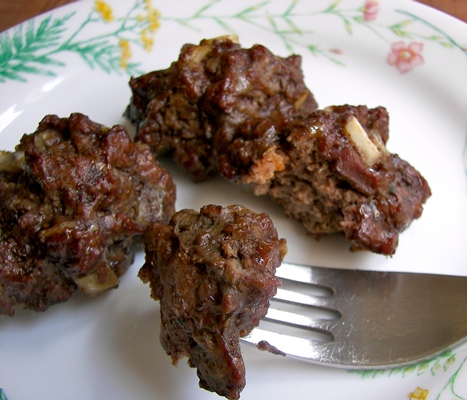

Super foods have been all the rage for the past few years. We’ve all heard about certain super foods that are darlings in the media like kale, blueberries, acai berries and salmon to name a few. What about other super foods that maybe aren’t so sexy like sardines, organ meats, and fermented foods? These are definitely super foods! They just aren’t very common in the U.S. right now, although they used to be.
Sardines
Wild caught sardines are not only a good source of protein but they are loaded with omega-3 fatty acids, Vitamin D, calcium, B12, iron, and many other nutrients. Since they are at the bottom of the food chain, they are also low in mercury and other contaminates like PCB’s, making them an especially good option for kids and pregnant women!
Canned sardines are the easiest to find around here. Choose ones that are packed in water or olive oil.
Honestly, I can eat sardines right out of the can, but I understand that not everyone is like that. If you’ve never tried sardines, buy the ones that say boneless and skinless to start with. They are just like canned tuna once you mash them up.
Organ meats
Organ meats are the original super food. In some traditional cultures, only the organ meats were eaten; the lean muscle meats (what we eat now) were given to the dogs. The liver was especially prized. Eating liver was thought to give you great strength and could have magical powers. Some believe it has an “anti-fatigue factor” as well.
Well, liver IS an amazing source of many nutrients- vitamins A, D, E, K, all the B vitamins (especially folic acid), copper and iron. It is also very high in CoQ 10 which is needed for energy production in the body- maybe this is the “anti-fatigue factor”?
Organ meats like liver were very common, even in the U.S., not too long ago. I have an old cookbook of my grandmother’s from the 1930’s and it is loaded with organ meat recipes. You don’t need to eat organ meats all the time or even in large amounts to get the benefits. A few ounces a week is enough, and that’s easy to do if you are mixing it in with other foods if you don’t like the taste. The recipe below is a great place to start to get the benefits of organ meats like liver. Choose organ meats from healthy animals, like pasture raised or grass fed local beef, pastured chickens, etc. (HERE are some resources).
Fermented Foods
Fermenting has been a traditional food practice in almost every culture around the world for centuries. With the fairly recent boom in research (and media) around probiotics (and our gut microbiome), fermented foods are getting a bit of a comeback. Fermented foods are loaded with probiotics (beneficial bacteria for our GI tract). Naturally fermented foods like yogurt, kefir, kombucha, sauerkraut, kimchi, pickles, and other fermented veggies are becoming more and more popular.
Probiotics have many health benefits like improving your immune system, improving your digestion, and some studies say that they can even help you lose weight.
True fermented foods will be in the refrigerated section of the store, so the majority of pickles and sauerkraut out there are NOT fermented, they are just in brine. You want to look for “live food” or “contains live cultures” on the label. Aim for a variety of fermented foods too, they all contain different strains of probiotics. You may also want to start slow, with small portions. If you’re not taking any probiotics or you’re not used to eating fermented foods, and you drink a whole bottle of kombucha, for example, you may end up with a horrible stomach ache. Go slow. Most traditional fermented foods were used like condiments with a meal, so try small amounts each day to build up a healthy microbiome. Oh, and don’t heat up your fermented foods, this will kill all the good probiotics.
Want to make your own fermented foods? Check out:
- The Art of Fermentation, by Sandor Katz
- Real Food Fermentation, by Alex Lewin
- Fermented by Jill Ciciarelli
- Or this blog post to get you started.
Grain Free Sardine Fish Cakes
Adapted from Ditchthewheat.com
Serves 2
This quick and easy recipe is a simple way to incorporate sardines into your diet, especially if you’re a little hesitant to try them. These little cakes were so good, they were devoured just on their own. They would also be delicious over a mixed green salad with a lemon vinaigrette. Yum!
Ingredients
1 can of sardines (around 84 grams when drained)
1 egg
1 ½ Tbsp of coconut flour
1 Tbsp of Dijon mustard
2 Tbsp fresh parsley
¼ cup chopped green onion
1/8 tsp of salt
¼ cup almond flour for coating the cakes
1 Tbsp olive oil
Directions
- Place the drained sardines, egg, coconut flour, Dijon mustard, parsley, green onion, and salt in a food processor. Pulse until all combined. Roll into small or medium sized balls (about 4-6) and flatten with the palm of your hands. Dip the fish cakes in a small bowl of almond flour. Evenly coat both sides.
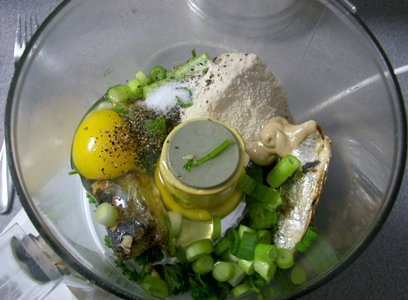
- Heat olive oil in a medium-sized skillet over low to medium heat. Cook the fish cakes, turning once.
- The cakes are done when both sides are golden and crispy.
Beef Liver and Onion Meatballs
Adapted from PrimalPalate.com
Makes 4 servings
This is a good way to start loving liver! With all the spices in this recipe, you won’t even know it’s in there.
Ingredients
1 lb grass fed ground beef
¼ lb pastured beef liver finely diced, or ground in a food processor
½ cup onion, diced
2 tsp smoked paprika
1 tsp garlic powder
½ tsp cinnamon
1 tsp black pepper
½ tsp salt
Directions
- Preheat oven to 350° F.
- In a medium-sized mixing bowl, combine ground beef and beef liver.
- Season with smoked paprika, garlic powder, cinnamon, black pepper, and salt. Continue to mix with hands until meat is equally seasoned.
- Mix in the diced onion.
- Form meat mixture into balls, slightly larger than an ounce, and place in a baking dish. Bake meat balls for about 25 minutes.
Note: You can increase the amount of liver to increase the nutrient content to about 50% beef/liver ratio.
Click here for a printer-friendly version of these recipes.
Click here for a printer-friendly version of this blog post.
Save
